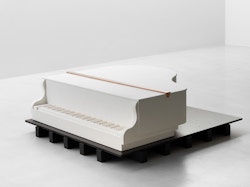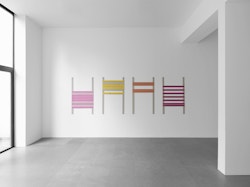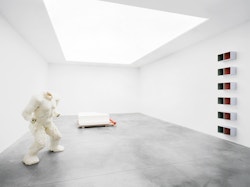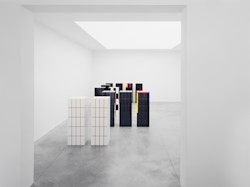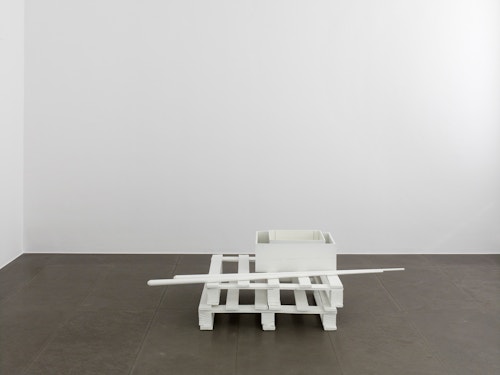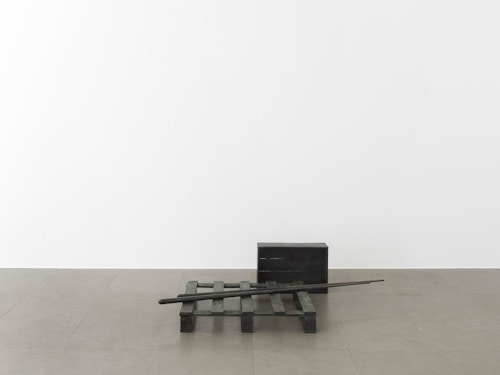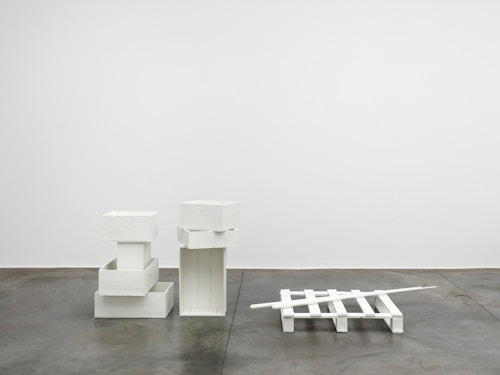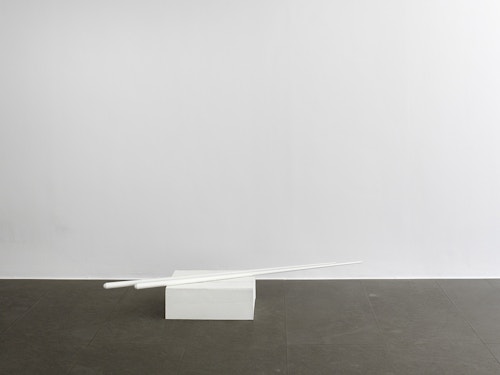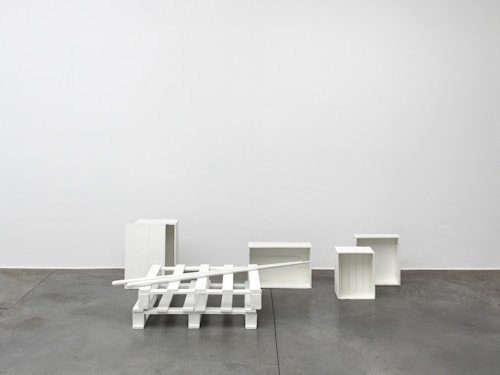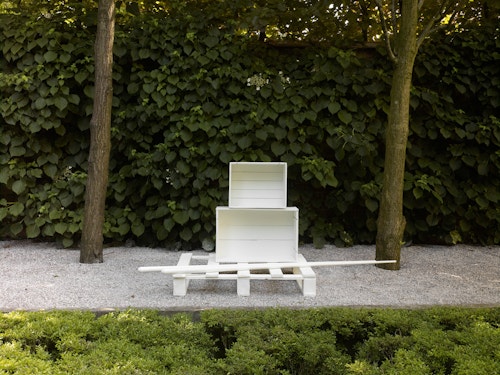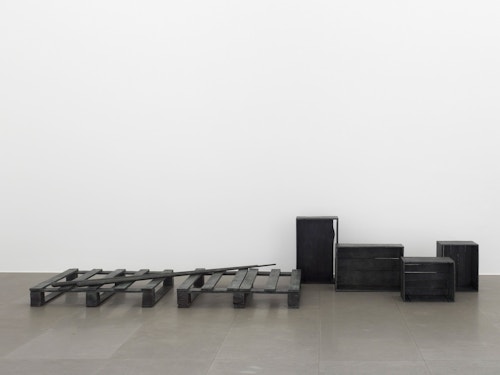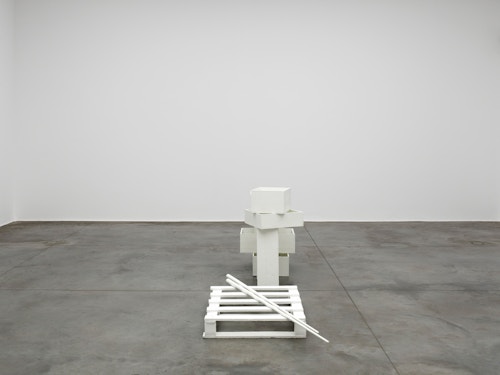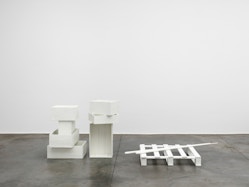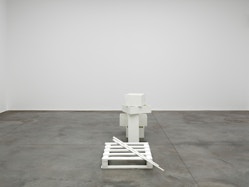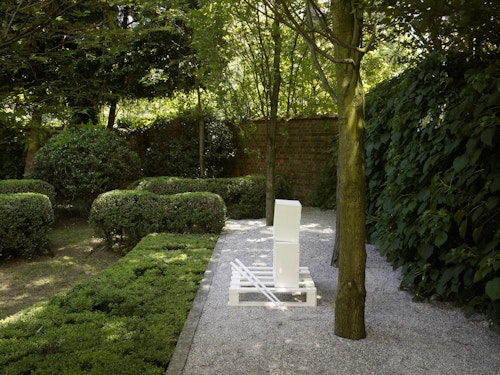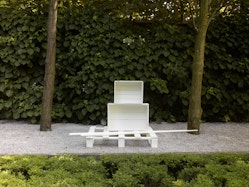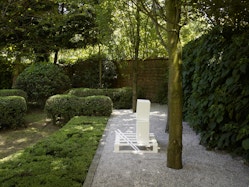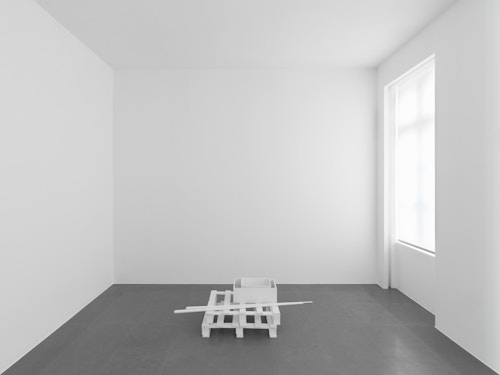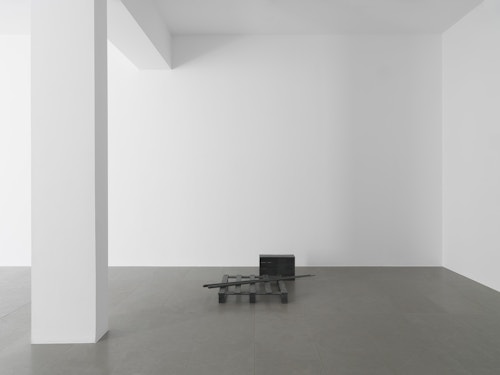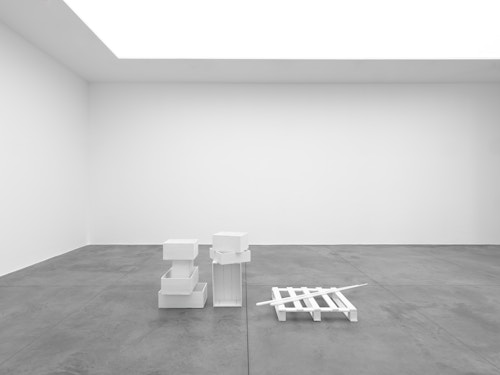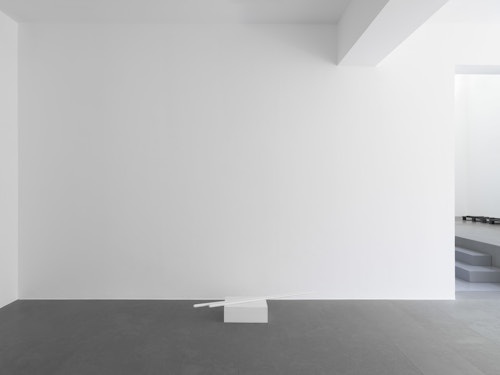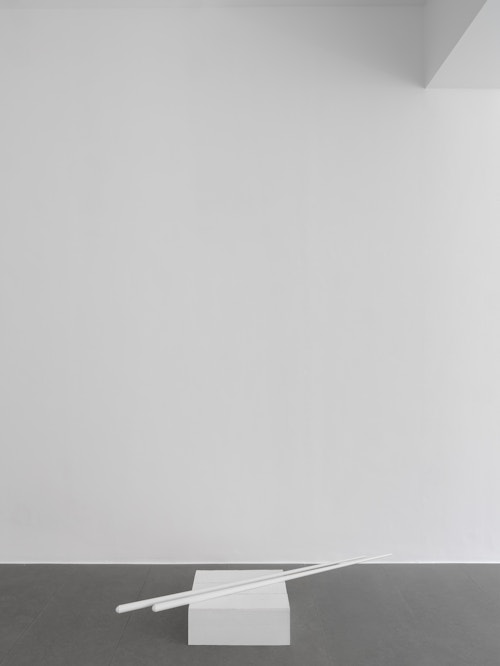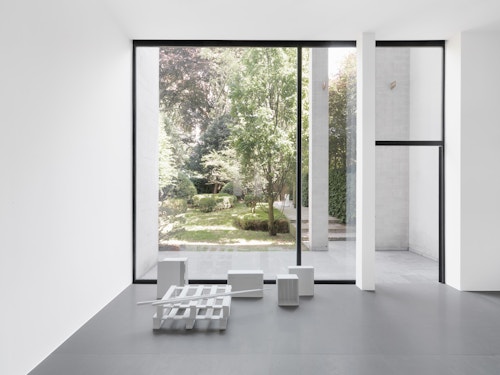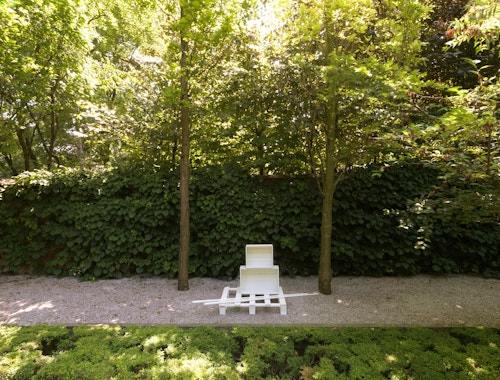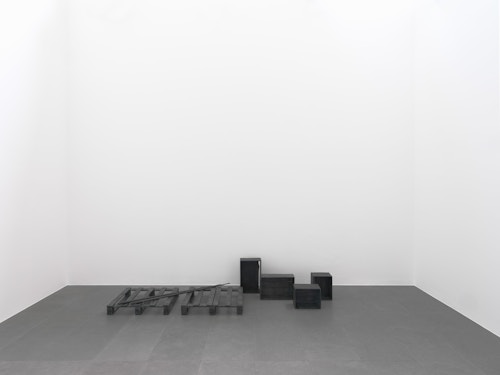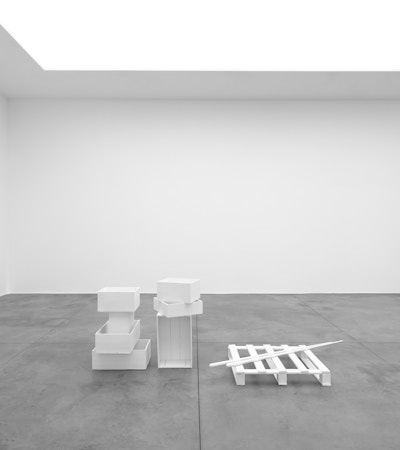
Jan Vercruysse Places [Lost]
In 2005 Jan Vercruysse initiated a new group of works, named Places. The artist situated the Places works vis-à-vis the previous TOMBEAUX works, based on the idea and practice of memory. Where the TOMBEAUX are places for memory—empty, by definition full of the faculty of memory—, the Places are places of memory—more conclusive, concentrating “meanings”, things that happened, parts of lives. They allow and support a “fulness”.
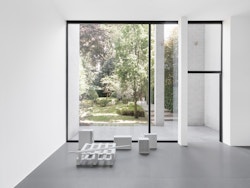
A first group of works, Places (I)—the image of which refers to ex votos—is composed of the hands of the five cards of the poker card game. Configurations are installed using the four suits—spades, hearts, diamonds and clubs—, made of rusted or coloured thin steel sheets. A second group, Places (II), is based on the image of commemorative plaques, often embedded in the floor of churches or found in archeological sites and where the traditional inscriptions are replaced with the shapes of the four suits of the playing cards, cut out in heavy rusted corten steel sheets. These works focus on how to define a space / a place through purely visual elements and (rhetorical) strategies.
The works from Places (III) have text. The characters of the Roman alphabet are transcribed into a new alphabet, based on a permutation system using the four shapes (suits) of the playing cards. In a first series of these works, the texts have a rather poetic or philosophic content (the way an artist would formulate it)—without any reference to an existing “place”. In a second series, Places (III.8)—in which the shapes which form the text, are cut out in marble slabs—the names of “real” places appear, each of them preceded by the sentence “mist obscured…” (e.g. “mist obscured… Palermo”). Through this reflective manoeuvre, the initial attention to the memory of a real, existing place, can be guided towards an understanding of the “existence” of the Places works: they are their own place.
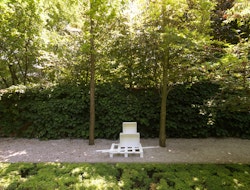
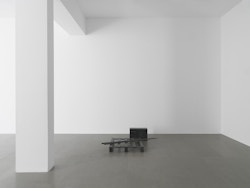
The works which Jan Vercruysse now exhibits, are part of a new series: Places [Lost]. How to initiate a first introduction, a narrative on these new works? A limited set of selected objects constitutes the base for the compositions of these works: a few wooden wine crates–of different shapes and dimensions, two wooden pallets and a pair of billiard cues. These objects are artefacts and they served a specific purpose; they have a “human” history. While a single wine crate, a single pallet or a single pair of billiard cues would be just that, it is in their combination—their compositions—that these objects transcend their primary physical characteristics: they become the remains of a journey, the silent keepers of “parts of lives”. In order to enhance the distance with these primary characteristics, the original artefacts are cast in bronze; these bronzes are thereafter painted with a chalklike white colour or sometimes patinated in the classic way. While the Places [Lost] acquire a sculptural quality—in fact, they even are sculptures—they are their own place.
